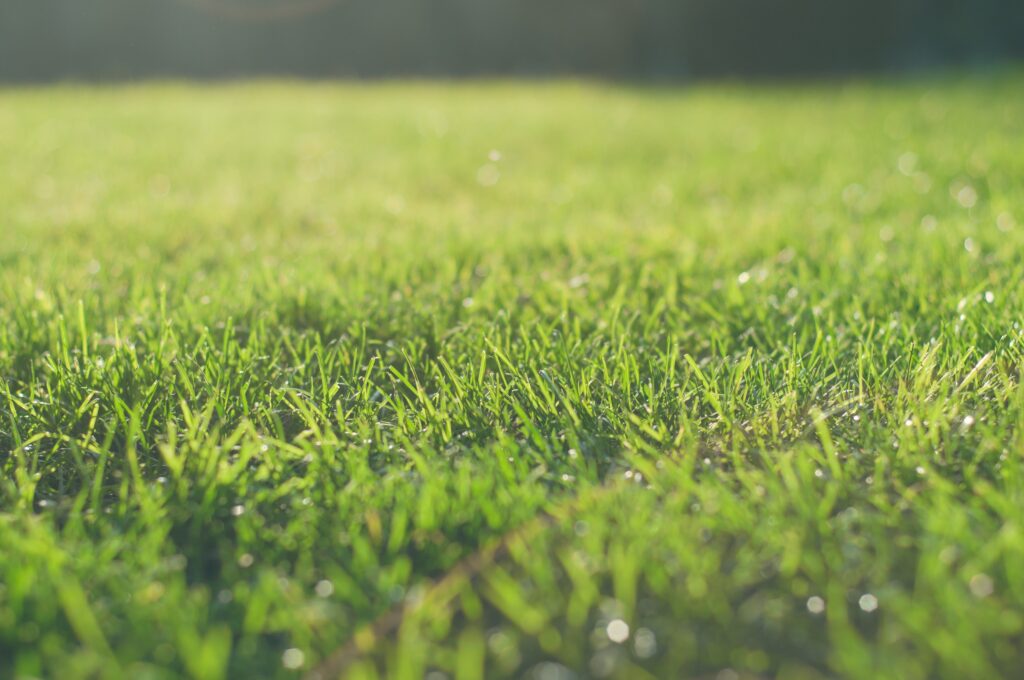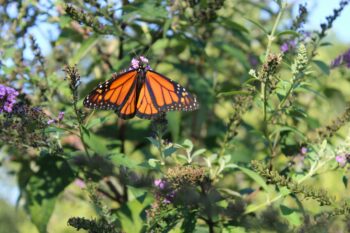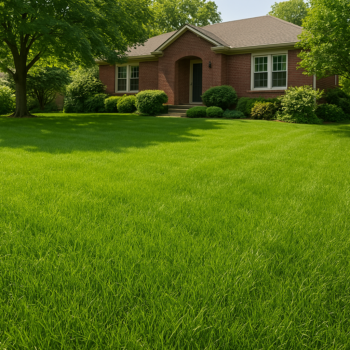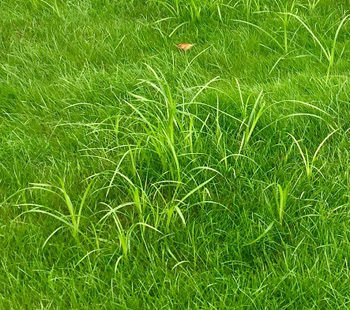Sun and Shade Tolerances
When you’re considering which turf grass will be best for your lawn, sun and shade tolerance must be weighed in to finalize a well-measured decision. Consider how shadows fall across your lawn at various points in the day, to determine the total amount of coverage it receives.
Full shade is when an area gets little to no sunlight throughout the day. Partial shade is when the ground is shaded for a portion of the day, but the shadows move such that it also receives at least a few hours of full sunlight. Dappled shade is produced by trees and tall shrubbery, through which some sunlight freckles the ground.
While all three grass breeds we’re discussing have some tolerance to shade, keep in mind that none of them are intended for fully shaded areas.
Bermuda grass is your best bet for large, open stretches of lawn, or yards with minimal trees. As a “true” warm-season grass, it thrives in full sunlight.
Zoysia grass is a bit more versatile. While it prefers full sun exposure, it can tolerate partial and dappled shade, so long as it isn’t excessive.
St. Augustine grass is the most flexible of the three when it comes to shade tolerance. Though it will happily soak up a full day of sun, it is certainly more shade-hardy than its counterparts.
Sod or Seed?
There are some things to consider when deciding whether to install sod or plant seed. Things to take into account include time, budget, and experience.
Even though grass seed is not all that cheap, it is less costly to purchase and sow when compared to the cost of having sod installed. You can gently seed your lawn in patches bit by bit, or you can till it as a whole, properly prepare it, and sow your whole yard.
This is quite time-consuming and taxing, but it will provide a fantastic sense of accomplishment once the fruits of your efforts begin to emerge. Once sown, you must tenderly care for your lawn and protect it from birds and foot trampling.
These measures can make sowing a new lawn seem arduous. But it’s all in the spirit of establishing a hardy, well-rooted ground cover that hasn’t suffered any trauma during its initial growth period. If necessary, you can set up “keep off the grass” signs for protection.
On the other hand, sod installation requires certain skills that are better off leaving to the professionals. Sod is also costly, heavy, and difficult to handle. The proper preparation of soil and decent soil contact is vital.
One thing to consider when comparing the two is that the majority of the work will go to the lawn care experts with sod installation. It may be more expensive, but it also has a somewhat higher success rate than sowing grass seeds on your own.
How Much Watering is Necessary for Each?
Bermuda requires the least amount of water, followed by Zoysia, while St. Augustine requires a high amount of watering. If you’re choosing a new turf grass to install, take this into consideration.
What is your annual rainfall? What are your local watering restrictions? Each type of grass offers its own attributes, but you want to make sure you choose one that complements your climate and your irrigation schedule.
Read our Lawn Watering Guide for more Details.
Final Thoughts
Whether you’re choosing a new grass or sorting out how to care for an established lawn, here are the top considerations:
- How much heat, cold, and shade coverage does your area and personal yard provide? What measures should you take to address that when choosing or maintaining your landscape?
- Do you want to sow grass seeds and take on the work yourself, or pay a bit more for sod installation?
- How much rainfall and irrigation will your yard receive? Be sure you pick a grass type you can keep healthy and verdant.
Here at Ryno Lawn Care, we’ve got the service and expertise you need to care for whichever ground cover you’ve got.
Click here for a free service estimate!






3 Responses
What zoysia and bermuda grass do you recommend to sod and seed.
Not sure which way I want to go.
Currently my yard has bermuda but it is thinning out in certain areas due to shade from a tree.
I would rather not have to completely resod the front yard.
Thanks
Todd Dykes
Zoysia does well in sun or shade, so if you have areas of both, that would be a good option. Personally, I think Zoysia looks better anyway.
will zoysia seed start in 100 degree weather. What brand of zoysia is the best